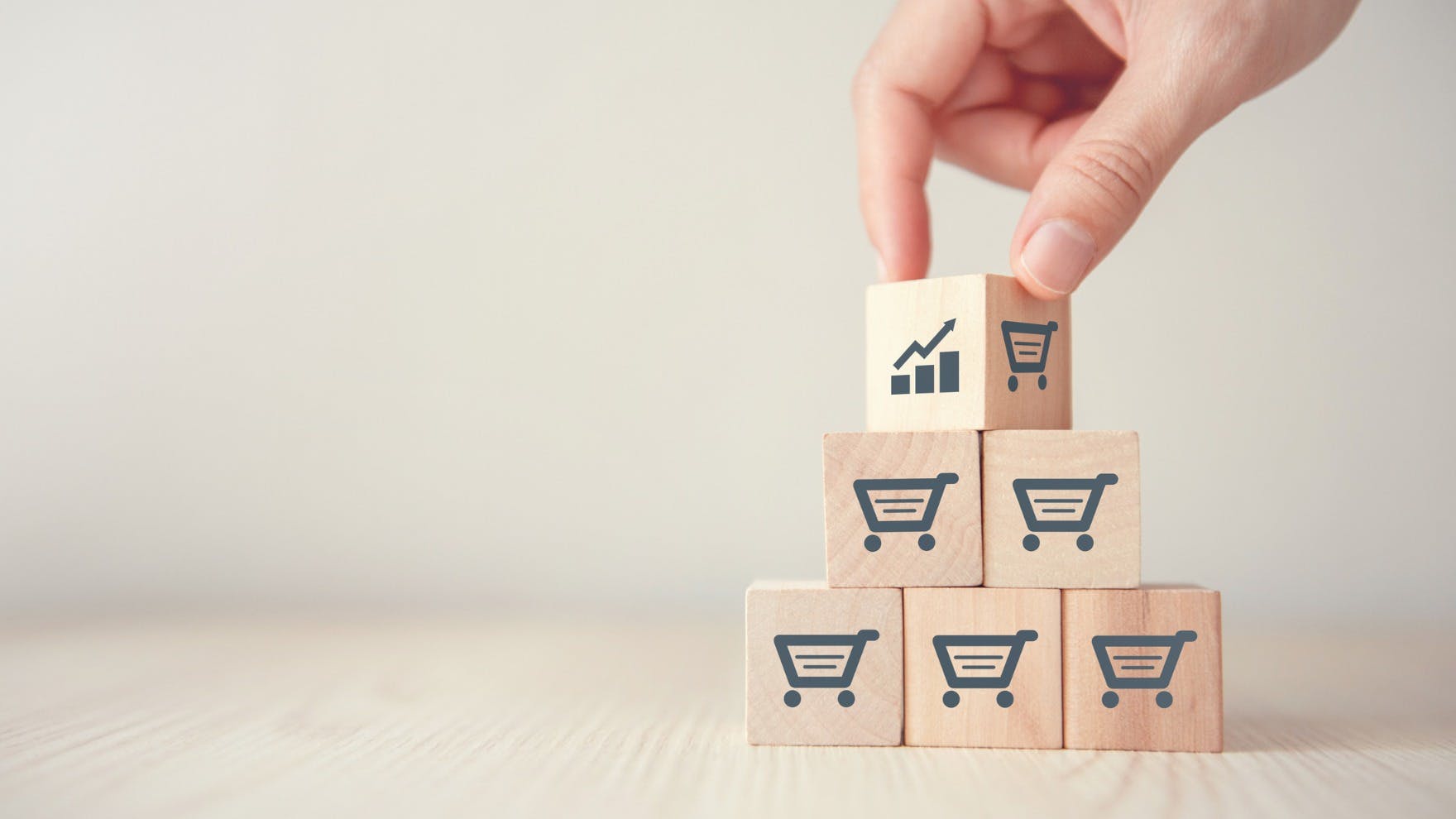Upselling and Cross-Selling: Everything You Need to Know
Casey O'Connor
Although a lot of emphasis in sales is placed on generating new leads, it’s actually anywhere from 5 – 25 times more expensive to acquire a new customer than it is to retain existing ones.
And it’s not just about the cost; the likelihood of successfully selling to an existing customer (60 – 70%) is much higher than that of selling to a new prospect (5 – 20%).
That’s why upselling and cross-selling can make such a dramatic impact on your bottom line. Both sales practices prioritize persuading existing customers, rather than new leads, to make additional or more expensive purchases.
In this article, we’ll go over everything you need to know about upselling and cross-selling, including exactly how to execute each strategy and some best practices to keep in mind.
Here’s what we’ll cover:
- What Is Upselling?
- Upselling Examples
- What Is Cross-Selling?
- Cross-Selling Examples
- Upselling vs. Cross-Selling
- How to Upsell
- How to Cross-Sell
- Best Practices for Upselling
- Best Practices for Cross-Selling
What Is Upselling?
Upselling refers to the strategy and sales tactics a salesperson relies on in order to encourage a prospect or existing customer to purchase a higher-end version of the product in which they’re interested.
This can also include sales reps encouraging buyers to purchase add-ons or enhancements, as long as those upgrades are still considered part of the same product line.
Upselling is all about making the original intended purchase bigger and better — not building out around it with additional but separate offers (that’s called cross-selling, which we’ll get to later in this article).
Take a look at the coffee upselling example below. Notice the way no additional products were added. Instead, the item is enhanced. The product is still the same, but the upsold version is bigger (and presumably better).
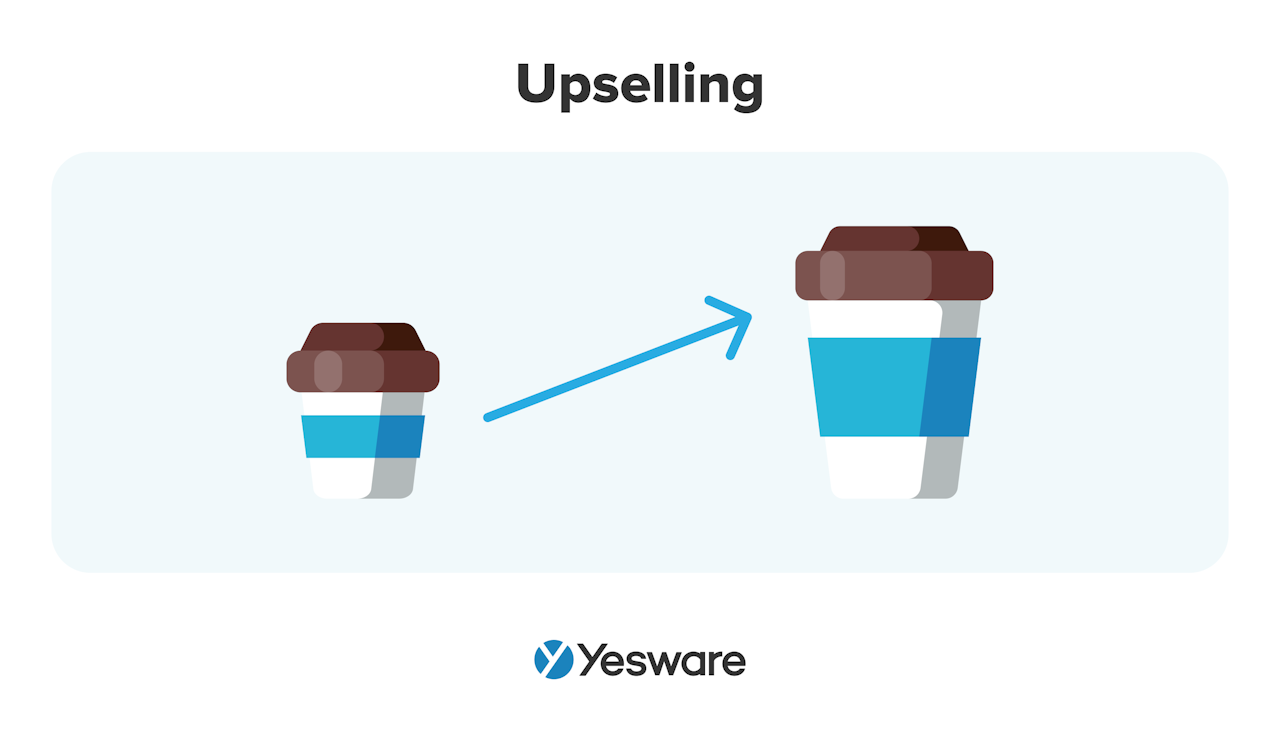
In other words, upselling is the practice of persuading buyers to make a more expensive purchase (in exchange for a more valuable product) than the one they originally planned.
Upselling Examples
Upselling is a very common sales practice, and many skilled salespeople engage in upselling without necessarily being aware of it.
For example, many SaaS companies offer the same product with various tiers of functionality and price.
Take a look at the example shown below. The product is an inbound marketing tool, and package prices are based on the number of contacts a user can store in the system.
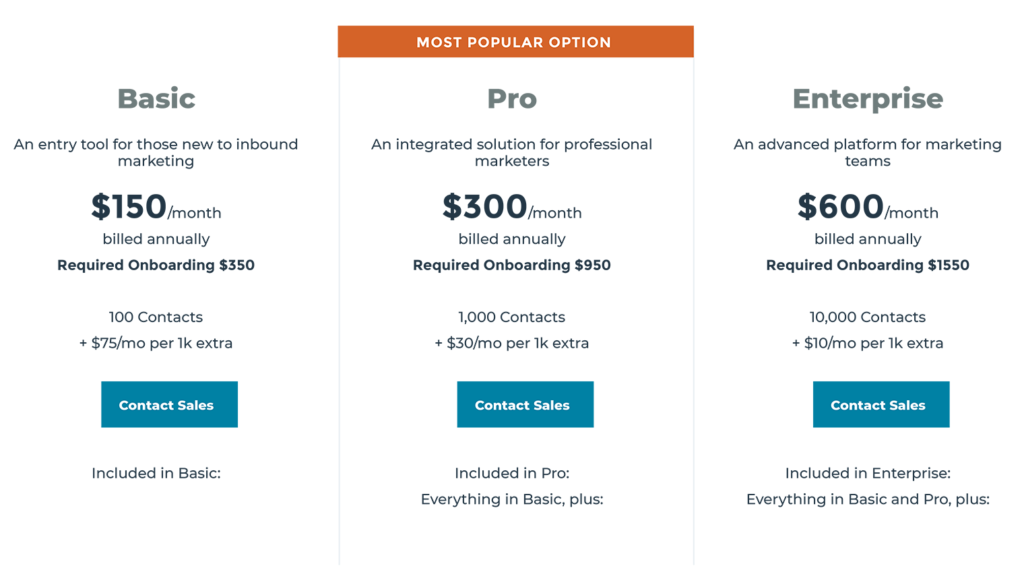
Notice the way each tier stays consistent with its offering: the number of contacts. The upsell is to add additional contacts for a higher cost. The value here is clear: the “Pro” option offers 10x the number of contacts as the “Basic” plan but at only 2x the cost.
Upselling works for physical products, too. Take a look at this upsell offer for a razor subscription company. The original product — the razor — stays the same. The upsell is the bigger and better razor with more blades and more cartridges.
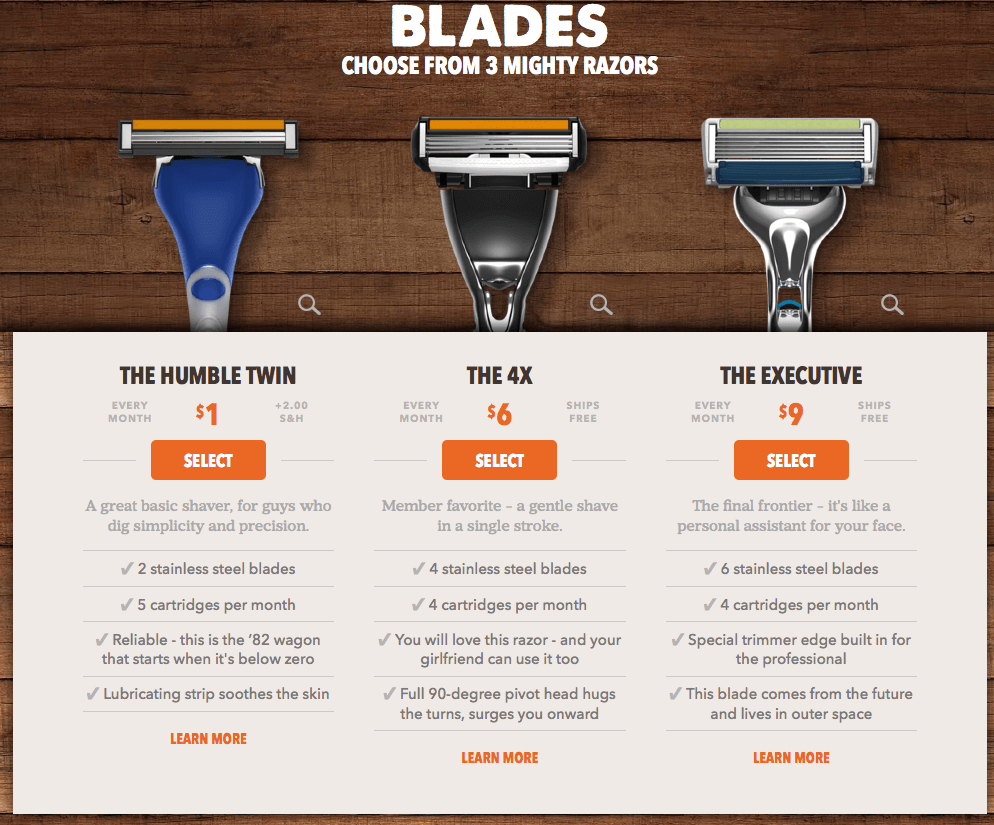
Warranties provide another good example of upselling. Many companies that sell electronics or other high-cost items will offer warranties or insurance policies that will cover some or all of the cost of the product if it breaks.
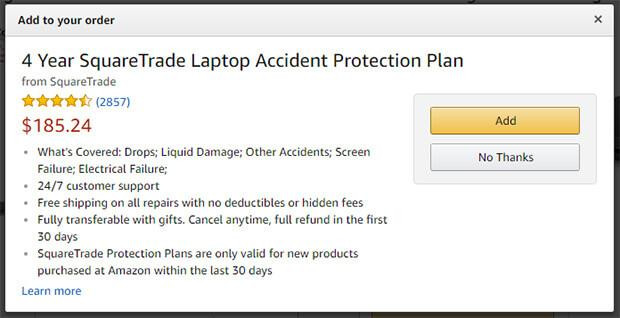
Again, notice the way the warranty does not change or build out the original product. Sales reps upsell the warranty to enhance the original product.
What Is Cross-Selling
Cross-selling is the sales practice of encouraging the purchase of additional, related products that compliment or enhance the original intended purchase.
Unlike upselling, which encourages customers to buy the same product but bigger or better, cross-selling asks customers to add additional, separate products to their order.
Here’s a coffee shop example similar to the one shown for upselling: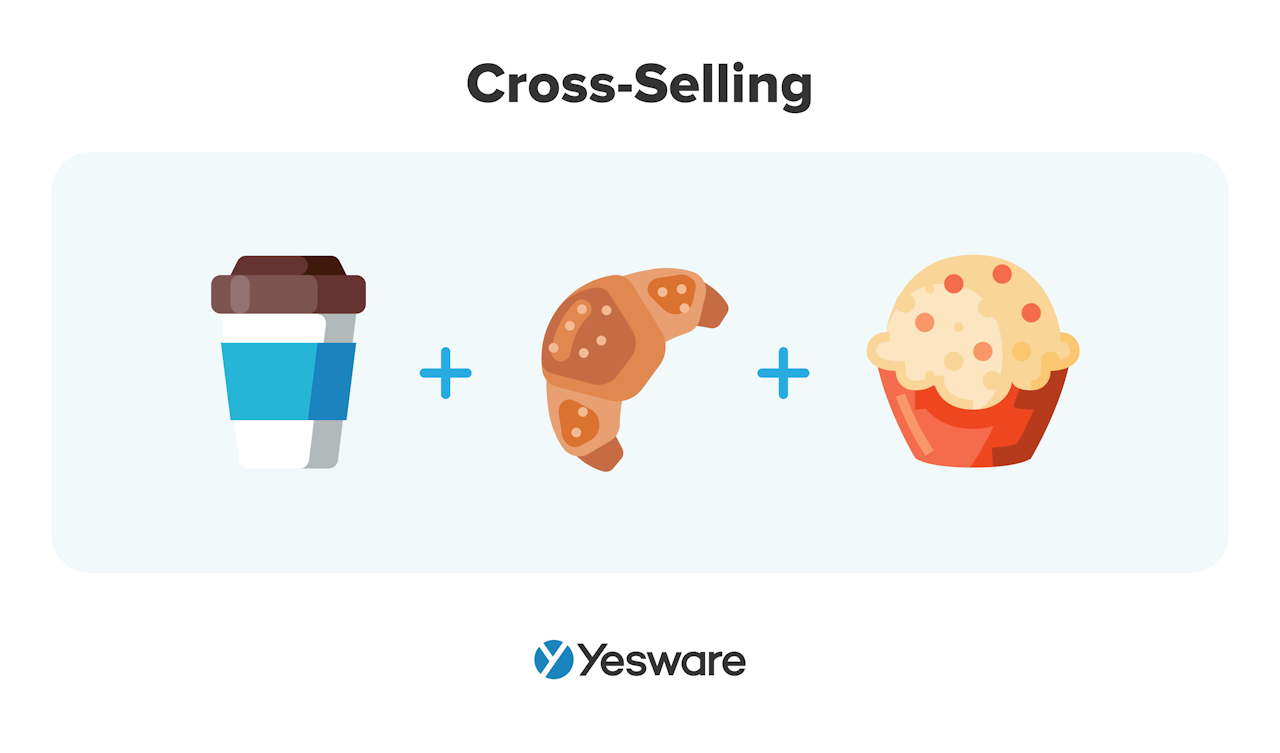 The original purchase was the coffee, and the cross-sell — different products that can be added on to enhance the original — is the croissant and muffin.
The original purchase was the coffee, and the cross-sell — different products that can be added on to enhance the original — is the croissant and muffin.
Cross-selling isn’t just about getting customers to buy as many products as possible, though. Skilled sales reps know that cross-selling efforts are most effective when the cross-selling options are directly related to the original purchase. The cross-sell offers should meet additional, complementary buyer needs that are not addressed by the original intended purchase.
In other words, cross-selling offers customers a chance to buy products that they may end up purchasing at a later date anyway. Cross-selling offers sellers an advantage by positioning that offer to buyers at a time when they’re already engaged in the buying process.
Cross-Selling Examples
There are many ways to cross-sell products, regardless of your industry or target market. Let’s take a look at a few examples.
Here’s another look at a razor company. The original intended purchase here is a razor; the cross-sells are the shaving brush and the shaving serum.
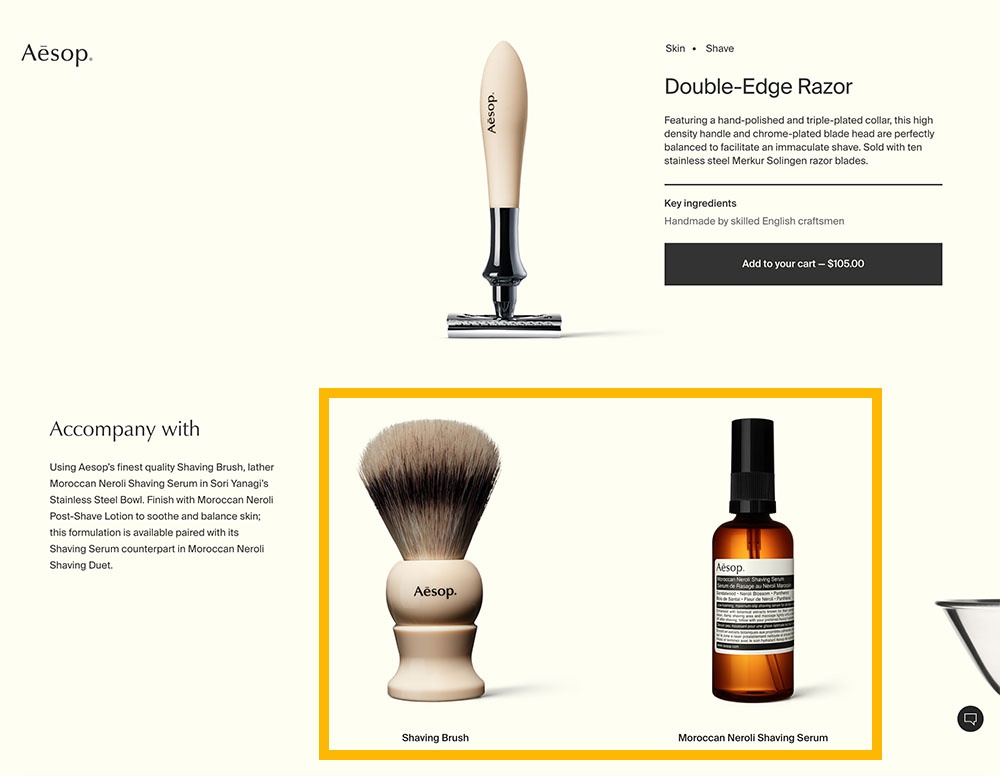
Let’s take a look at another example from a physical product.
In the image below, the buyer is in the process of adding an iPad to their cart. Apple offers them three cross-sells that would complement their iPad purchase: a pencil, a keyboard, and a case that all work with the chosen product.
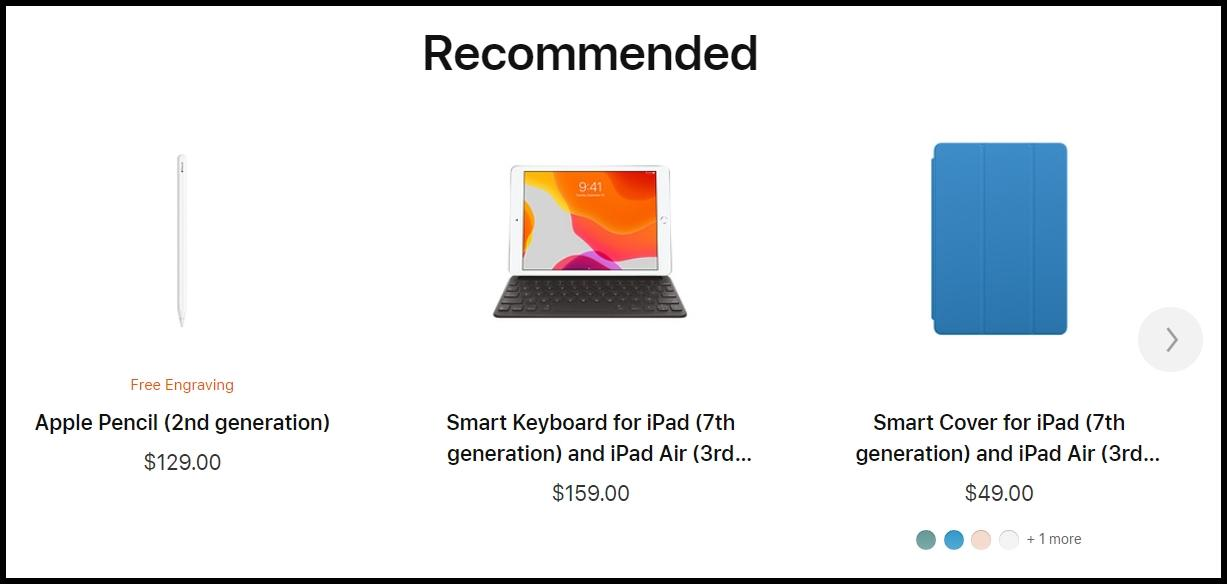
Here’s an example of cross-selling for software products. Salesforce offers several add-ons to their standard CRM offering. The cross-selling offers below include a billing feature, a sales cloud, and a marketing automation platform.
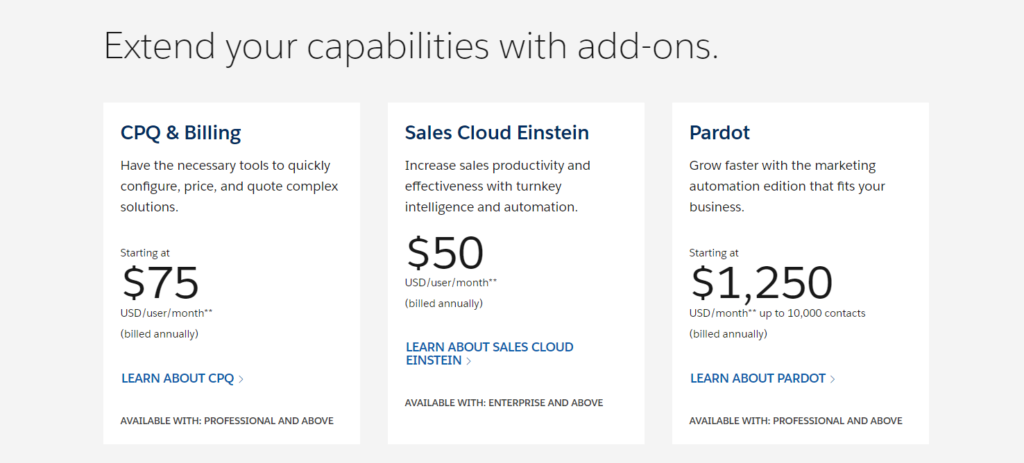
Each of the Salesforce cross-sells complements the original CRM purchase and are add-ons that the customer might otherwise go on to purchase on their own at a later date.
Upselling vs. Cross-Selling
Now that we’ve discussed what upselling and cross-selling are, let’s look at the similarities and differences.
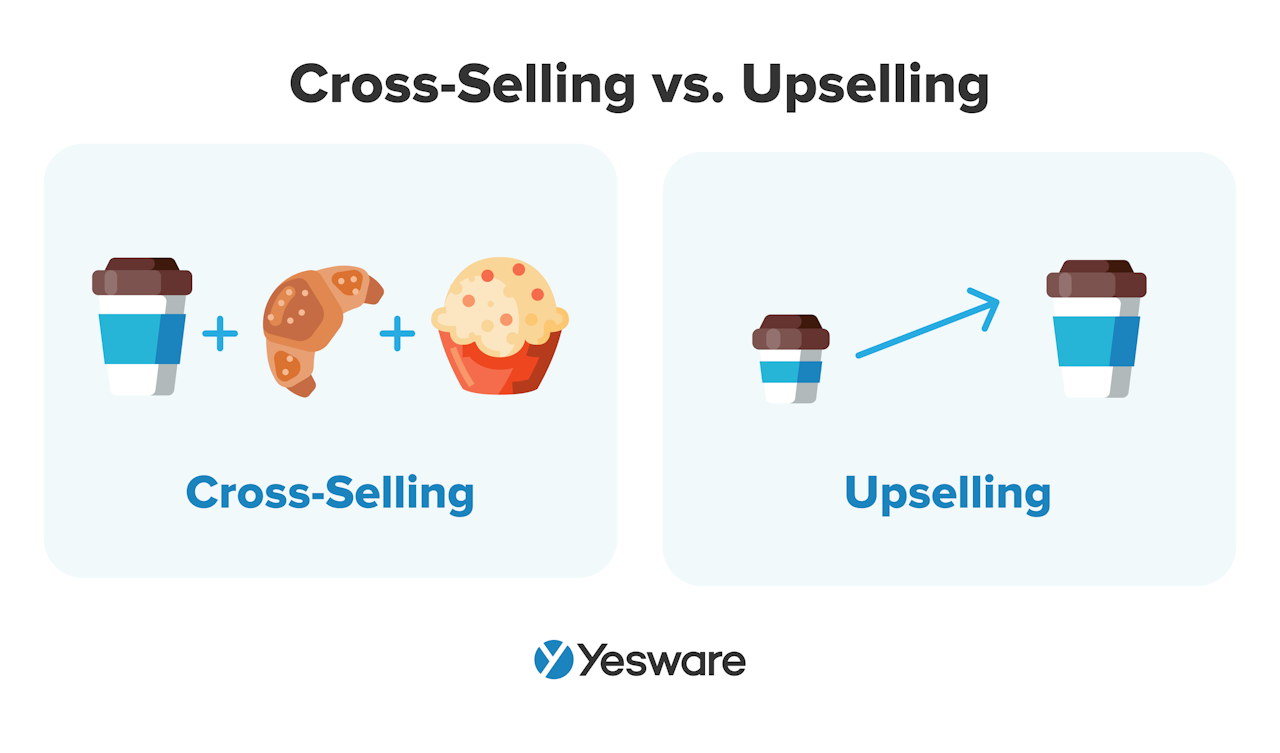 Upselling and cross-selling have many similarities.
Upselling and cross-selling have many similarities.
They both, for example, can occur at any stage of the sales cycle, though they both also usually take place in the mid-to-late stages of the sales funnel. In fact, both can also successfully take place after the point of sale with the help of a customer success manager (CSM).
Both cross-selling and upselling also both rely on a thorough understanding of the ideal customer profile (ICP), buyer personas, and especially the common characteristics of your most successful existing customers.
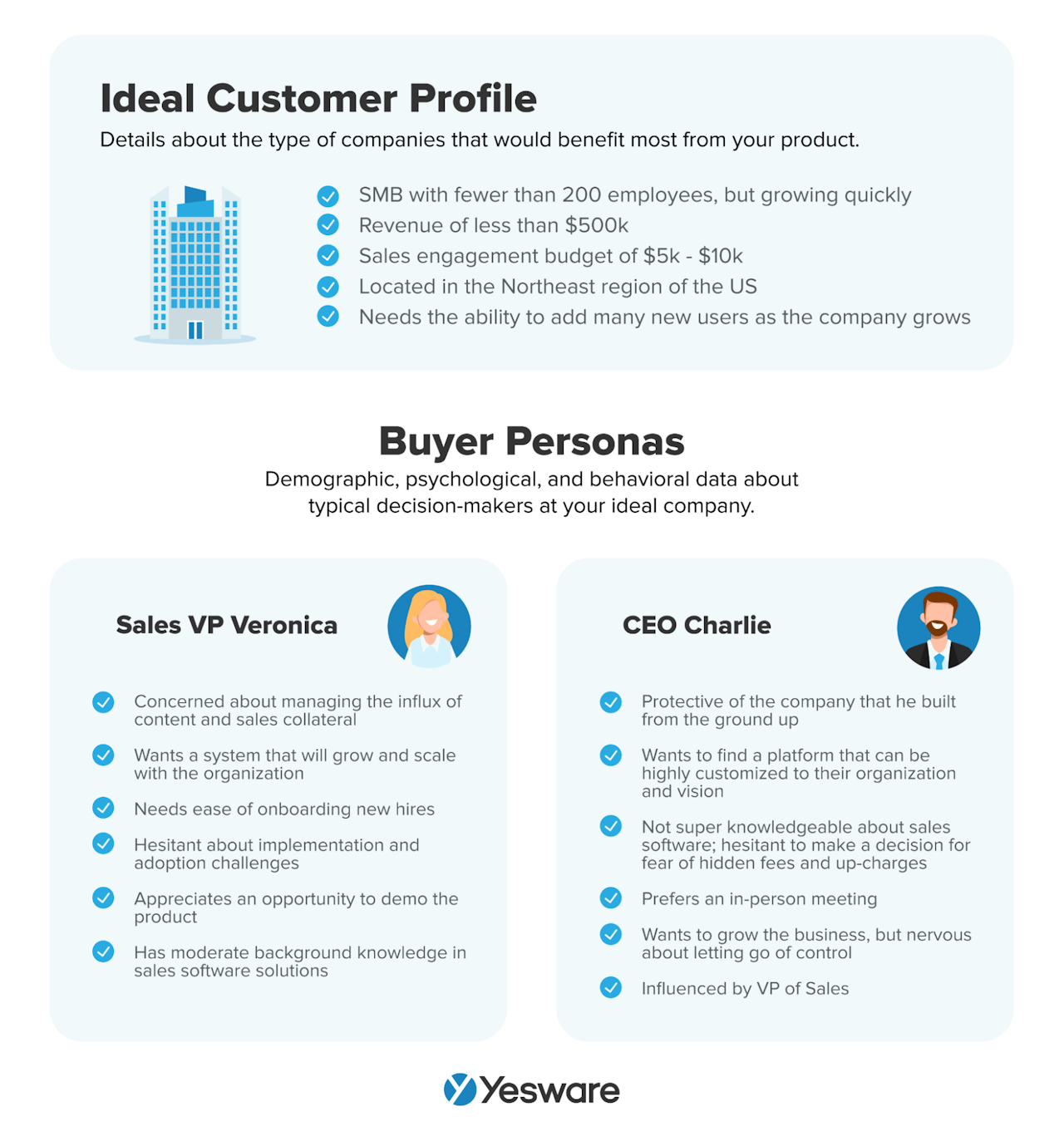 Both cross-selling and upselling also work to increase a sales team’s average order value (AOV). But this commonality also highlights one of the differences between the two.
Both cross-selling and upselling also work to increase a sales team’s average order value (AOV). But this commonality also highlights one of the differences between the two.
In addition to the way they differ in basic functionality — upselling means selling the same product, but bigger, while cross-selling means selling different but related products — upselling and cross-selling also increase AOV in different ways.
The practice of upselling increases AOV by generating a higher profit margin. Cross-selling, on the other hand, doesn’t necessarily increase profit margin. Instead, it laterally builds out the order. This also contributes to increased AOV.
How to Upsell
Each sales and marketing team should collaborate to determine the best upsell sales strategies for their target market. Strategies and tactics will be unique to each organization.
That being said, there are a few standard steps in creating your upsell strategy that can serve as a framework as you begin the process.
1. Make the Upsell Relevant
Regardless of what you’re selling, the upsell to the original purchase needs to be relevant. Think back to the coffee shop example: would it be relevant for a customer who’s on the go to buy a liter of coffee? Probably not.
Don’t create an upsell just for the sake of it. Your offer needs to be relevant and valuable to the customer.
2. Intentionally Design Product Limitations
It might be true that your product can do everything under the sun, but it’s not always prudent — sales-wise, at least — to offer that in a single package. One really effective way to upsell products is by allowing customers to push themselves into the higher price tier.
For example, many SaaS upsells arise from data or storage limits. Customers can look at the options themselves and determine that they may not fit in the most basic tier — they may need more storage availability, either now or down the line.
Be strategic in how you determine your offerings. A lot of upsells can occur naturally if the offers are structured carefully.
3. Discount the Upsell or Offer the Value
Many salespeople or sales managers are reluctant to offer an outright discount, as some theorize it cheapens the product or creates distrust around your pricing structure.
That being said, there are ways to demonstrate how great of a value the upsell represents.
In many of the examples outlined above, the upsell math is simple: upgrading a purchase usually means the buyer gets more value for less money than the original offer (i.e., the buyer is entitled to 100 contacts for $150 at $1.50 per contact, but the upsell offers 1000 contacts for $300 at only $0.30 per contact).
4. Wait Until After the Original Purchase
Although there are many opportunities to upsell all throughout the sales cycle, it can sometimes be beneficial to wait until after the customer has achieved success with their original purchase before you engage with them regarding an upsell.
Buyers are much more likely to purchase again from a brand they already know and trust.
5. Understand Your ICP and Customers
It’s crucial that sales reps have a deep and thorough understanding of the buyers in their target market, and the customers in their accounts. Profiles from both groups will help salespeople strategize how and when to best upsell products.
If, for example, you know that your target buyer seeks your product when they have about 50 customers, you can plan to upsell them to the next tier when they reach about 100 customers. A careful study of your existing customer base should be able to help you time that pitch.
6. Eliminate Risk
Prospects and customers will generally feel safer agreeing to an upsell if they know that they can opt-out or change their minds (within reason) if the upsell is more than they need.
A free trial or money-back guarantee can go a long way in helping buyers trust that you’re not just in it for the sale — that you’re truly confident the upsell will serve them better than the original purchase.
How to Cross-Sell
Much like upselling, strategies for cross-selling are unique to each individual sales team and their target market.
That being said, the following is a general set of steps that can get your team started in creating a cross-selling framework.
1. Make Data-Driven Suggestions
Start by analyzing your current customer base, especially those that were receptive to a cross-sell effort and purchased additional products. How much better are they doing now that they’re your loyal customer? How did their performance improve once they adopted additional products?
Wherever you can, use real numbers, case studies, and KPIs to demonstrate just how much value your products offer to users.
2. Ask Probing Questions
It’s very important that salespeople learn how to ask effective open-ended and probing questions throughout the sales process.
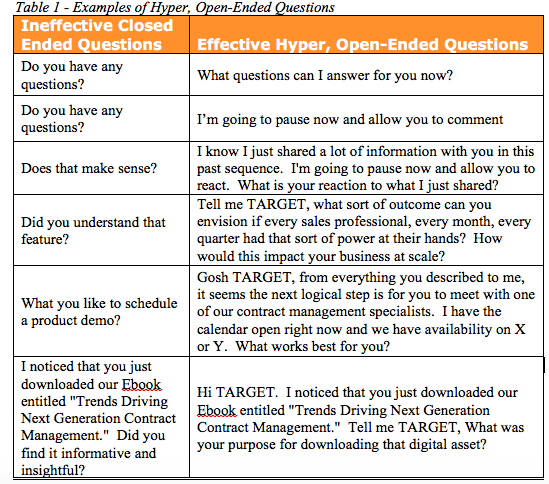
These kinds of questions can shed light on additional problems or pain points the prospect might be facing that can be easily solved with another one of your offers.
3. Consider a Pitch at the Point of Sale
Cross-selling offers a little bit more room to push complementary products directly at the point of sale. This is especially effective if, throughout the sales conversation, you heard the prospect mention additional pain points that can be solved with another one of your products.
The theory here is that, assuming the prospect is likely very close already to agreeing to purchase, they may be more willing to agree to additional purchases — especially ones that will solve additional problems for them. Unlike an upsell, a cross-sell offers the attractive “killing two birds with one stone” solution.
4. Leverage Promotions
Cross-sells are especially attractive to consumers when there’s an opportunity to take advantage of a promotion or a sale.
If you have a special offer on a product related to the one your prospect wants to purchase, mention it during or after the sales process.
5. Follow Up
Try to remember that a “no” in sales does not always mean “no” forever — especially when it comes to cross-selling products. Many customers will eventually come to the conclusion that they do, in fact, need the additional complementary products that you’re offering.
That’s why following up is so important. If your prospect or customer isn’t quite ready for a cross-sell, schedule a time to follow up with them at a later date. Eighty percent of sales require five follow-ups before a prospect agrees to purchase, so don’t throw in the towel too soon.
Best Practices for Upselling
Companies that are successful with their upsell strategy enjoy higher profit margins, increased customer lifetime value (LTV), better customer relationships, and an improved bottom line. It’s a practice that every sales organization can adopt and optimize over time.
With that in mind, here are some best practices to keep in mind as you develop your upsell strategy.
Map the Upsell to the Customer Journey
The better you understand the buyer’s journey for your particular market, the better you can position your upsell.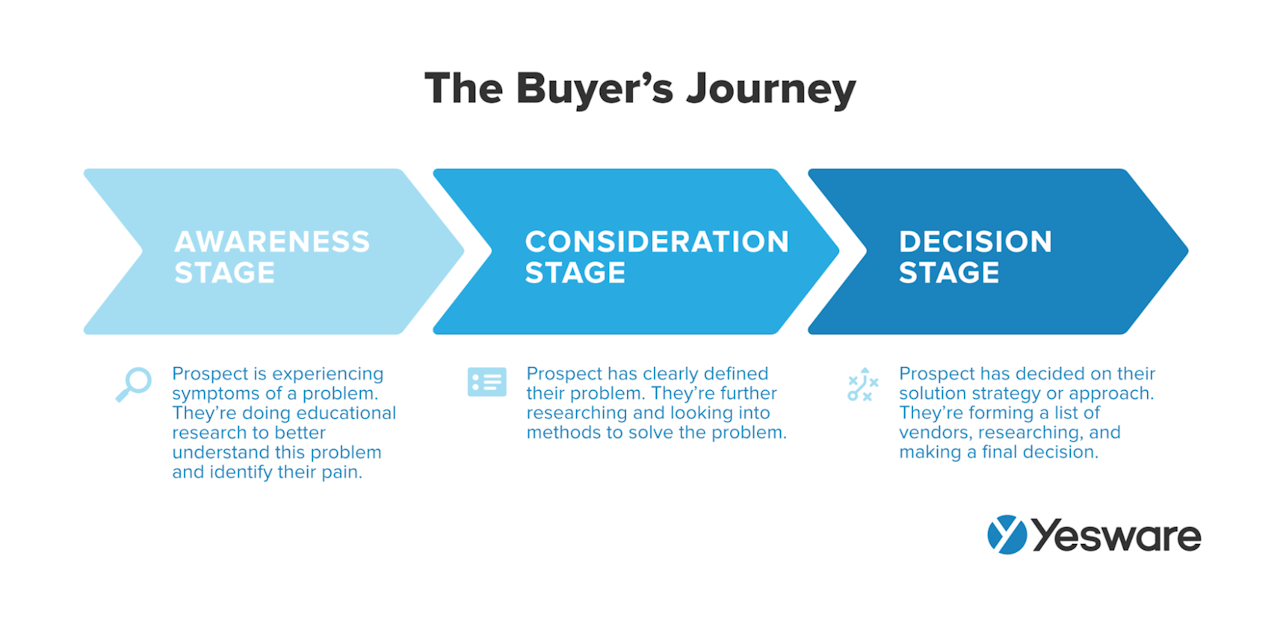 This will help you understand your buyer’s thoughts and decision-making process at each stage of the process, so you can determine the exact sales and upsell strategies that are likely to resonate with them.
This will help you understand your buyer’s thoughts and decision-making process at each stage of the process, so you can determine the exact sales and upsell strategies that are likely to resonate with them.
Perfect Your Product
This may sound obvious, but it’s very important that your product offerings are top-notch. There’s no better way to upsell a customer than by giving them an outstanding experience with the base package. Make your product so good that the buyer can’t help but want the bigger and better version.
Use Comparison Charts
Comparison charts that detail the differences between tiered plans can be very effective in promoting an upsell.
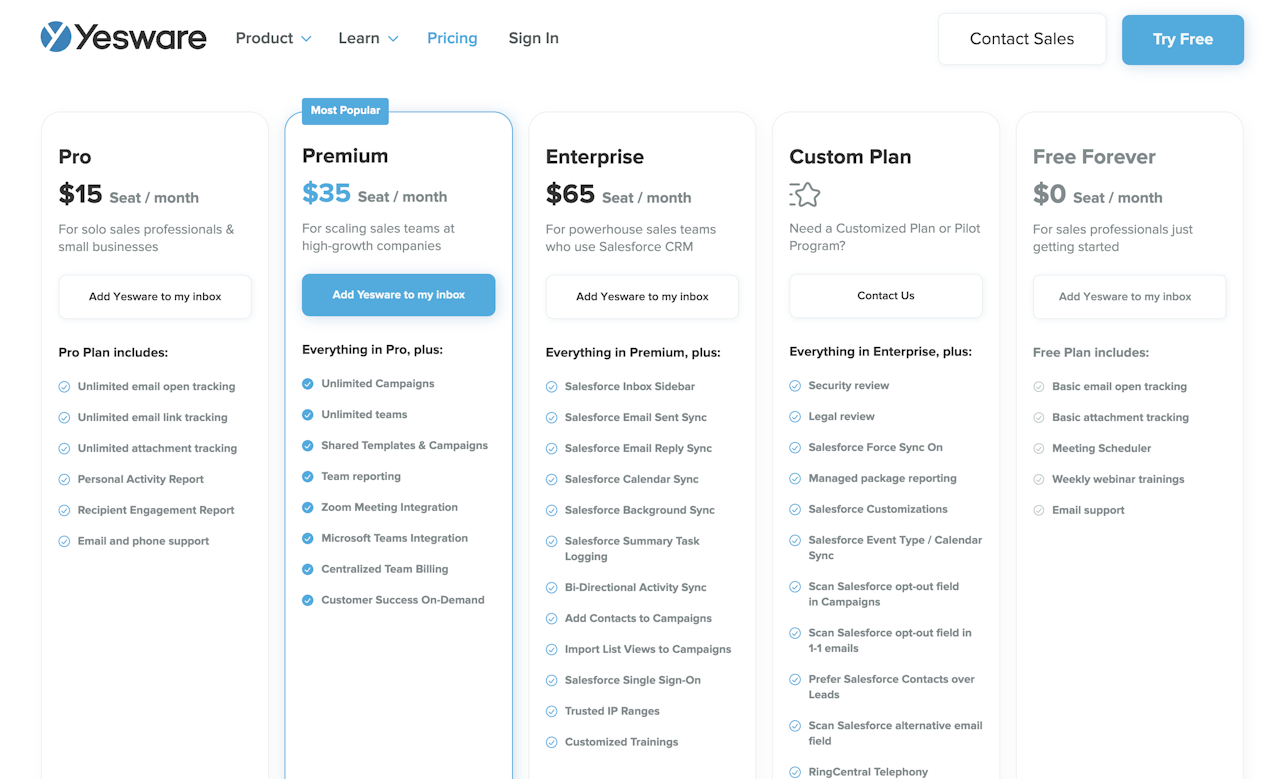
This pricing format allows prospects to carefully consider the different levels of value they’ll receive if they upgrade to a more expensive offer.
Personalize Your Pitch
The more you know about your prospect or customer (learned by asking open-ended questions), the more you can personalize the sales process.
To the best of your ability, pitch the upsell using personalized data and the prospect’s own goals to demonstrate its value. The more the prospect can see the tangible and realistic benefits the upsell will bring, the more likely they are to purchase.
Best Practices for Cross-Selling
Cross-selling is also a great way to boost revenue and generate brand loyalty. It can be a particularly lucrative strategy for e-commerce businesses; Amazon estimates that 35% of its revenue comes from cross-selling.
Here are some best practices to keep in mind for cross-selling.
Identify the Best Products for Your Prospect
Sales reps will want to avoid cross-selling just for the sake of pushing more products. Be very thoughtful about which products you recommend as cross-sell options. Buyers will be able to sense whether you’re recommending products because you truly believe they’ll bring value, or if you’re just trying to make a commission.
Price Accordingly
Consider the prices of the products in your catalog. They should complement one another and make sense based on the value each product brings.
It’s also important to consider pricing when determining which products to cross-sell. A buyer who purchases a lamp will likely not be receptive to a sales rep attempting to cross-sell them a $10,000 leather sofa. They might, though, be interested in coasters and a picture frame.
Don’t Sell Too Much
Along the same lines of choosing the right products, it’s also important to be conservative in how much and how often you attempt to cross-sell. Remember, put the value to the customer first. Cross-selling certainly improves the bottom line, but that isn’t why it exists. Cross-selling, to a sales rep, should serve the purpose of meeting the customer’s needs in the best way possible.
Use Nurture Campaigns
Automating part of the cross-sell process can be very beneficial to sales teams. You might consider setting up a drip campaign that’s deployed to current customers to remind them of the other products available that may suit their needs. Remember how important the follow-up is? Automate the process to begin optimizing it.
Get sales tips and strategies delivered straight to your inbox.
Yesware will help you generate more sales right from your inbox. Try our Outlook add-on or Gmail Chrome extension for free, forever!
Related Articles
Casey O'Connor
Casey O'Connor
Casey O'Connor
Sales, deal management, and communication tips for your inbox
